Sheep dipping has had something of a renaissance over the past number of years, as farmers seek to move away from pour-on products that primarily only prevent blowfly strike. Reports of sheep scab have become more prevalent, with many farmers returning to the trusted dip tub to rectify the issue.
A fixed sheep handling unit with dip tank has a TAMS reference cost of €125.87/m2 (revised April 2022), with the final tranche of TAMS closing on 16 December.
The scheme is set to be replaced by the On-Farm Capital Investment Scheme (OFCIS) in January 2023 as part of CAP 2023.
Sheep handling facilities are nearly guaranteed to feature in the new scheme, with the Department of Agriculture likely to want more control over new dipping facilities due to the dangers to human and aquatic life where dipping solutions are present.
Design
The fundamental consideration when laying out a dipping tub is to consider the environment. Dipping tubs should not be located near watercourses of any description, nor should they be located in an area where spillage may flow towards a watercourse.
Again, with the environment in mind, it is best to source a precast concrete or plastic dipping tub as it is a difficult task to construct a fully leak-proof tub using blockwork and plaster.
Dipping tubs should be 1.1m in depth. Dip tub size should be related to flock size. A 1,050-1,250 litre tub is suited to flocks of 100-250 ewes, capable of holding one or two sheep at a time, while larger flocks of 250-500 ewes will require a tub of 1,818-2,000, capable of holding three to four ewes or five to six lambs at a time.
Installing larger dipping tubs than is required means it will be costly to prime the dipping tub before starting.
Long dip tubs are 7.6-12.5m long, with the theory being that the sheep walk down the ramp and, while swimming their way through the bath, they are sufficiently dipped.
The long swim bath allows continuous dipping and reduces handling, although they are very expensive to build and fill.
To justify their cost, an output of 500 ewes per hour is required, ruling them out for nearly all Irish farms.

A race is situated to one side of the dipping tub, with a chequered plate lid covering the slide. /Teagasc
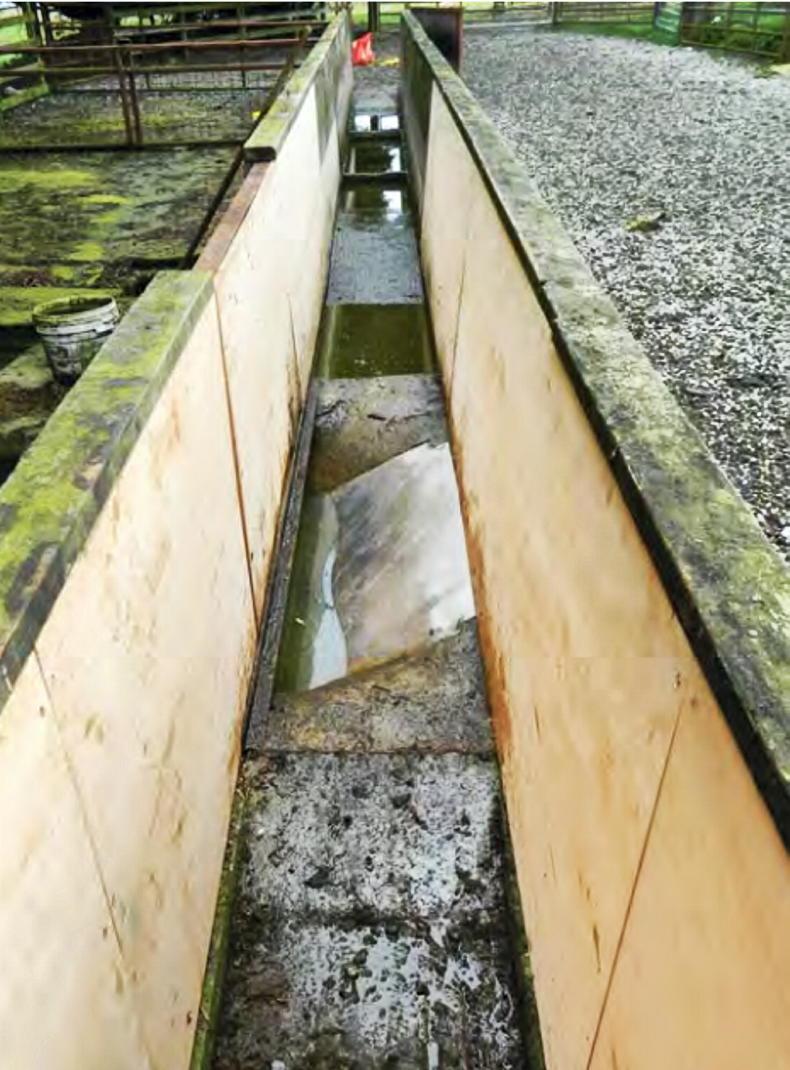
When removed, the sheep enter the dipping tub through the stainless steel set at a 30° angle. /Teagasc
Whatever it’s size, the tub should be located to allow ease of access for a tractor and vacuum tanker to remove spent dip or replenish a tank with clean water.
With an average flock size in Ireland of roughly 100 ewes, the most cost-effective method in setting up a dipping tub is to locate the tub at the edge of a semi-circular forcing pen.
Sheep can then be manually placed in the tub, although this puts the farmer at greater risk from splashing when sheep enter the solution.
A race with a false floor and slide similar to the one pictured, can reduce the labour required when dipping sheep.
The first 1.5m should be a concrete floor to encourage the sheep through the race, while a smooth finish (stainless steel) ramp at a 30° angle will direct sheep in to the tub.
Draining pens
The exit should be stepped with a guillotine gate in place to allow sheep to exit through to a draining pen.
Two side-by-side pens are recommended, with 0.5m² required per ewe. Flocks of 100 ewes should have 15m² of draining pens, 30% of the flock.
Floors should be of non-slip concrete construction of 100mm depth, with a slope of 1:30 directing drained dip back towards the dipping tub.
The edges of the drainage yard should be tapered towards the dipping tub, with kerbing installed at gateways to prevent leakage.
Similar to the dipping tub, a guillotine gate is recommended for drainage yards to prevent the operator having to walk through dipped sheep who may shake solution off their fleece.
Sheep dipping has had something of a renaissance over the past number of years, as farmers seek to move away from pour-on products that primarily only prevent blowfly strike. Reports of sheep scab have become more prevalent, with many farmers returning to the trusted dip tub to rectify the issue.
A fixed sheep handling unit with dip tank has a TAMS reference cost of €125.87/m2 (revised April 2022), with the final tranche of TAMS closing on 16 December.
The scheme is set to be replaced by the On-Farm Capital Investment Scheme (OFCIS) in January 2023 as part of CAP 2023.
Sheep handling facilities are nearly guaranteed to feature in the new scheme, with the Department of Agriculture likely to want more control over new dipping facilities due to the dangers to human and aquatic life where dipping solutions are present.
Design
The fundamental consideration when laying out a dipping tub is to consider the environment. Dipping tubs should not be located near watercourses of any description, nor should they be located in an area where spillage may flow towards a watercourse.
Again, with the environment in mind, it is best to source a precast concrete or plastic dipping tub as it is a difficult task to construct a fully leak-proof tub using blockwork and plaster.
Dipping tubs should be 1.1m in depth. Dip tub size should be related to flock size. A 1,050-1,250 litre tub is suited to flocks of 100-250 ewes, capable of holding one or two sheep at a time, while larger flocks of 250-500 ewes will require a tub of 1,818-2,000, capable of holding three to four ewes or five to six lambs at a time.
Installing larger dipping tubs than is required means it will be costly to prime the dipping tub before starting.
Long dip tubs are 7.6-12.5m long, with the theory being that the sheep walk down the ramp and, while swimming their way through the bath, they are sufficiently dipped.
The long swim bath allows continuous dipping and reduces handling, although they are very expensive to build and fill.
To justify their cost, an output of 500 ewes per hour is required, ruling them out for nearly all Irish farms.

A race is situated to one side of the dipping tub, with a chequered plate lid covering the slide. /Teagasc

When removed, the sheep enter the dipping tub through the stainless steel set at a 30° angle. /Teagasc
Whatever it’s size, the tub should be located to allow ease of access for a tractor and vacuum tanker to remove spent dip or replenish a tank with clean water.
With an average flock size in Ireland of roughly 100 ewes, the most cost-effective method in setting up a dipping tub is to locate the tub at the edge of a semi-circular forcing pen.
Sheep can then be manually placed in the tub, although this puts the farmer at greater risk from splashing when sheep enter the solution.
A race with a false floor and slide similar to the one pictured, can reduce the labour required when dipping sheep.
The first 1.5m should be a concrete floor to encourage the sheep through the race, while a smooth finish (stainless steel) ramp at a 30° angle will direct sheep in to the tub.
Draining pens
The exit should be stepped with a guillotine gate in place to allow sheep to exit through to a draining pen.
Two side-by-side pens are recommended, with 0.5m² required per ewe. Flocks of 100 ewes should have 15m² of draining pens, 30% of the flock.
Floors should be of non-slip concrete construction of 100mm depth, with a slope of 1:30 directing drained dip back towards the dipping tub.
The edges of the drainage yard should be tapered towards the dipping tub, with kerbing installed at gateways to prevent leakage.
Similar to the dipping tub, a guillotine gate is recommended for drainage yards to prevent the operator having to walk through dipped sheep who may shake solution off their fleece.







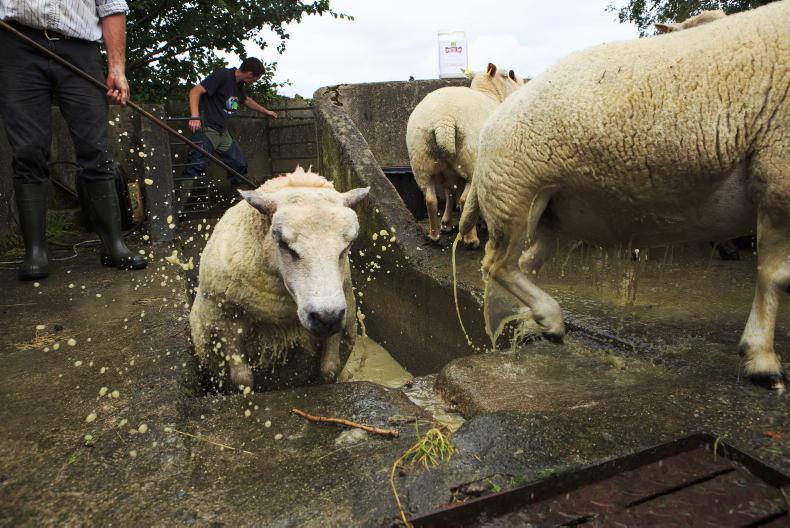
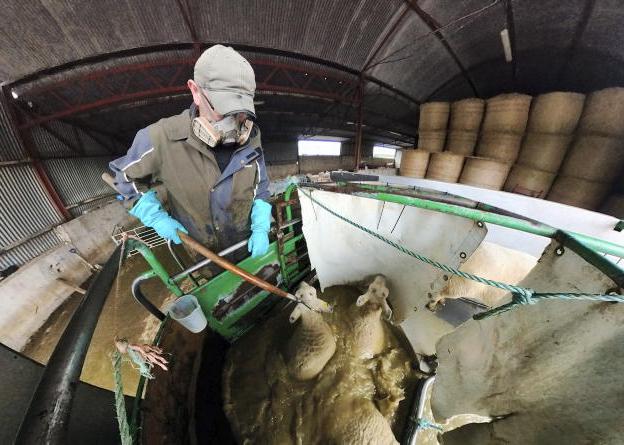
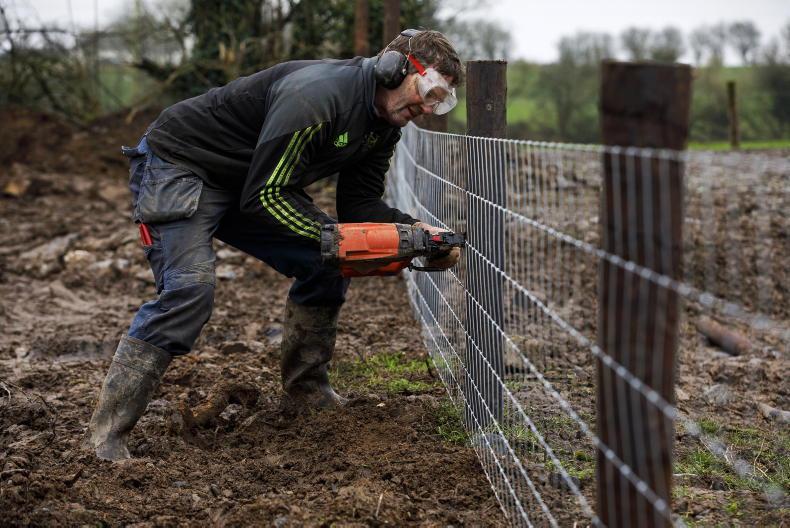
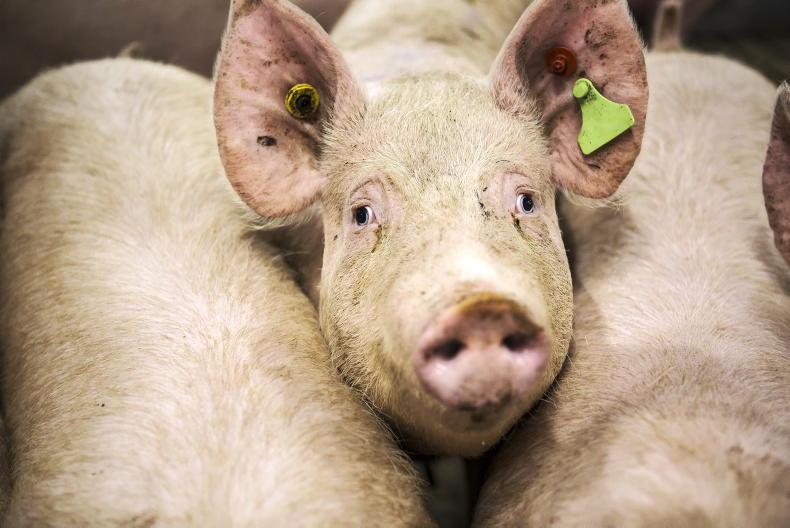
SHARING OPTIONS